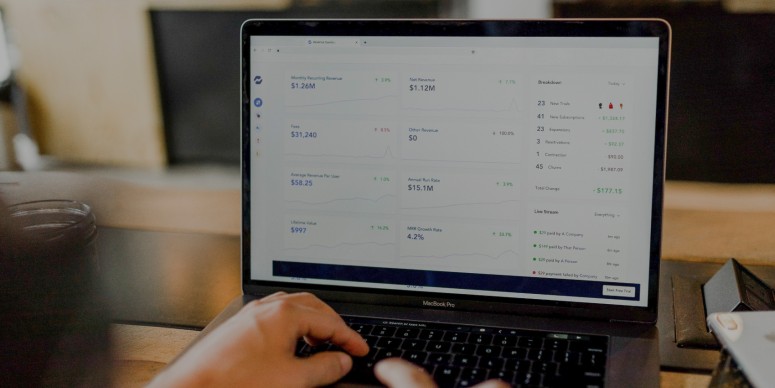Over the past 5 years, we have seen the fourth industrial revolution taking shape and the new technologies emerging to transform every business and aspect of society. And at the core of these changes is the data created minute-by-minute. It’s time for organizations to change their attitude towards data and get comfortable squeezing out useful insights. The amount of data generated today from all industry domains —the big data, in other words— is huge. It is expected that
by 2025, the amount of global data produced will reach 175 zettabytes, that’s 1,000,000,000,000,000,000,000. With all that information out there on our preferences and habits, it would be really short-sighted to ignore what it could mean for different service-providers and companies in general.
However many organizations are still struggling to keep up with the data revolution, not having the right knowledge or skill set to take advantage of this new wealth. And given that there are many ways to extract the value of all this information now at our disposal, most of the companies that weren’t born digital might find it a little overwhelming.Figuring out what data you need and how to best use it has become the biggest challenge. Organizations need to move on from using data in an ad hoc fashion, to put it to use to forecast the future and better plan their actions.
That’s where
predictive data analytics enter the game and with huge benefits. There are two angles to using data to predict the future. The first one is customer oriented, which means predicting what they are likely to buy or like. The second one is applying predictive analytics on the internal operations of an organization. In this case, data can be used to identify production issues, predict shortcomings and maintenance cycles.
For example, in
manufacturing, predictive data analytics can be used for predictive maintenance (forecasting when the equipment fails to perform a task), as well as for demand forecasting, price optimization, product development, warranty analysis, etc.
On the other hand, predictive data analytics is quickly becoming the
driving force behind modern marketing. Using predictive analytics can help the companies to find better leads, better align sales and marketing, set up marketing automation, understand current customers, etc.When the Big Data is integrated with Al, the devices become smarter and their ability to perform complex analysis also increases. As a result, advanced AI solutions will lead the market and the demand for such machines will also grow.
Therefore, there is no surprise that
the most innovative enterprises in the world are using AI today and are succeeding at changing customer experiences, creating new business models and measuring AI’s contribution to streamlining internal processes. In fact, more than
30% of these enterprises expect AI to be among the areas of innovation with the highest impact on their business in the next three to five years.
As significant as the impact of AI will be on business processes improving operational efficiencies, however, its biggest potential lies in developing new products and services that can evolve into major revenue streams over time.
For example in
real estate, integrating AI algorithms to real estate applications will help to make business processes more transparent and accelerate the processing of data. Just as AI and big data could be used to price homes according to popularity, real estate agents could also use this tech to customize the listings of buyers.
In
luxury retail, there are already companies that use AI-powered image recognition technologies to identify whether a product is genuine or not, which allows them to shut down businesses offering bootleg items more quickly.
KONE: The global leader in the elevator and escalator industry has launched a new maintenance program: 24/7 Connected services. They use predictive data analytics to perform real-time analysis on operations data identifying potential problems and generating predictions. KONE has installed a number of sensors in their lifts, which are all connected to the internet and stream all the data back to their analytics cloud.
Amazon: The e-commerce giant uses predictive analytics for targeted marketing to increase customer satisfaction and loyalty. They have developed a patented anticipatory shipping model to predict the products the clients are likely to purchase and when they may buy them. That way, they can send the items to the local warehouse even before you order them. Amazon also uses predictive data analytics to create bundles (up-selling) and to provide suggested purchases (cross-selling).
Spotify: Spotify uses data on users’ listening habits to curate different playlists that they might find interesting, combining music that they already know with the one they haven’t listened to yet. Spotify also offers each user a custom playlist called Discover Weekly, where they combine new songs of user’s favorite artists with recommended artists. And it is thanks to those algorithm-based playlists, that the users have grown to love, that Spotify has become the largest on-demand music service.
Netflix: Netflix uses the watching history of users with similar tastes to generate movie recommendations so that the users stay engaged and continue to pay for their monthly subscription. Personalized image thumbnail is a subset of movie recommendations. Netflix annotates these images and calculates which thumbnails have the highest likelihood of resulting in a click for different users. For instance, if a user likes certain actors/movie genres, Netflix believes he or she is more likely to click thumbnails with certain actors/image attributes.
So if you’re interested in changing your attitude towards data to start transforming your industry, take a step further!
